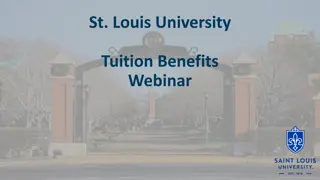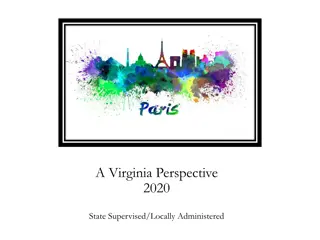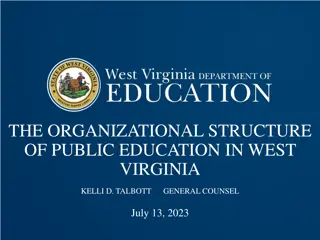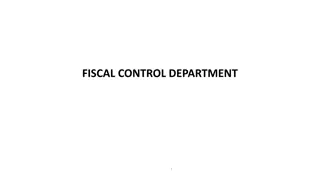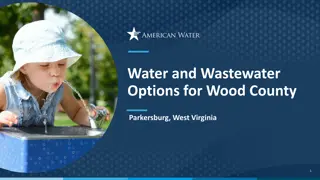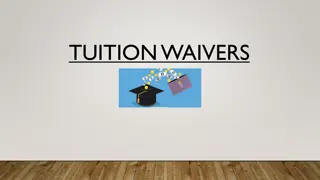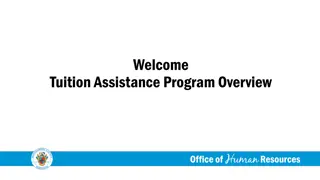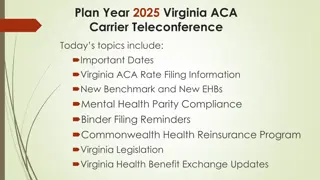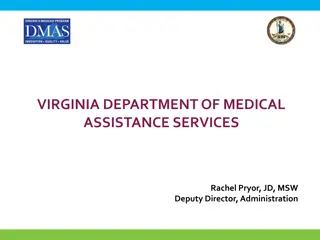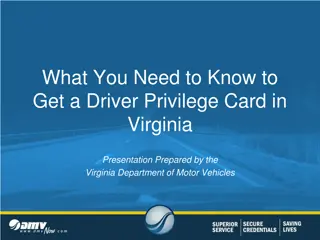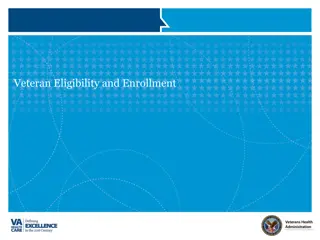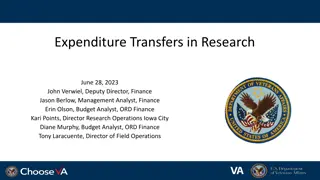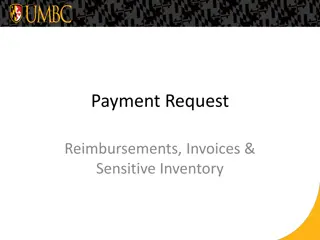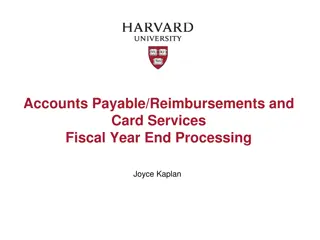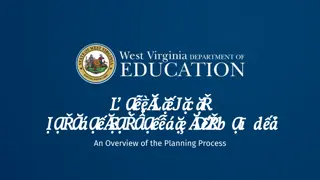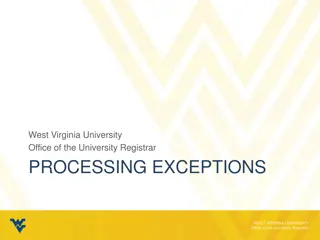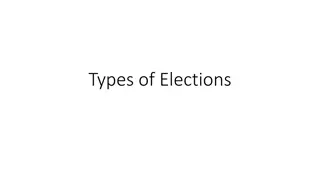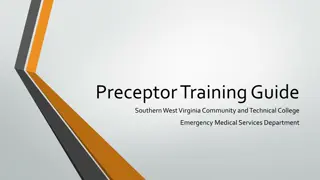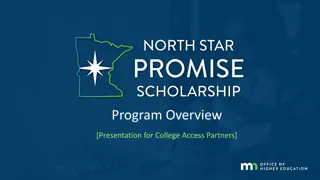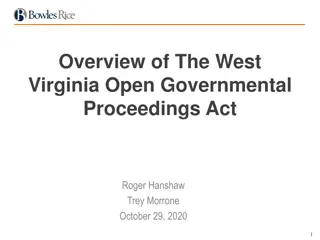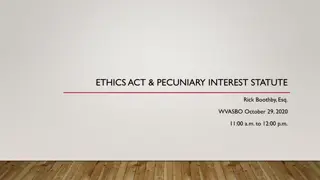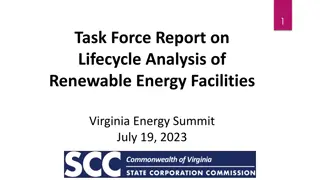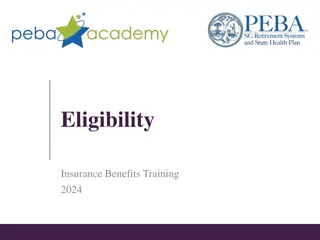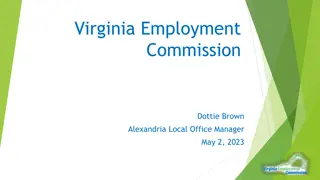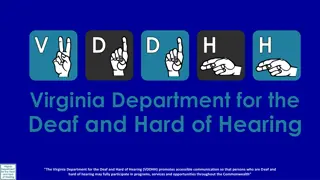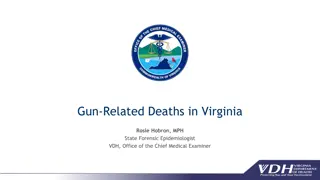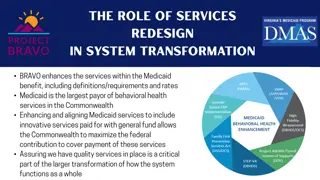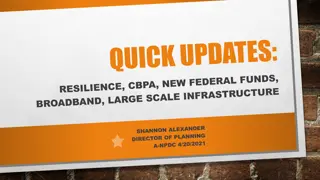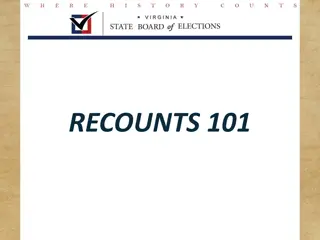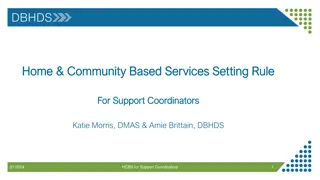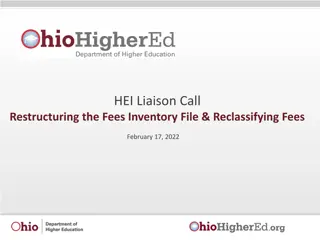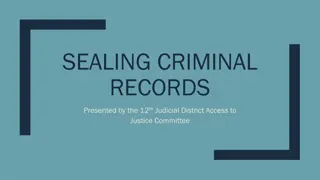Eligibility and Process for Tuition and National Board Reimbursements in West Virginia
The West Virginia Legislature allocates funds annually for reimbursement programs like National Board Certification Fee Reimbursements and Tuition Reimbursements. County employees must apply for and use these funds first before accessing federal grants. Various forms are used to request reimbursements, and approved payments are made from specific appropriations. The reimbursement process involves submission of forms, review by central office staff, and approval by WVDE, with notifications sent via email. Reimbursement status can be checked through an online system, and grant awards are issued yearly by WVDE.
Download Presentation

Please find below an Image/Link to download the presentation.
The content on the website is provided AS IS for your information and personal use only. It may not be sold, licensed, or shared on other websites without obtaining consent from the author. Download presentation by click this link. If you encounter any issues during the download, it is possible that the publisher has removed the file from their server.
E N D
Presentation Transcript
Tuition and Tuition and National Board National Board Reimbursements Reimbursements Samuel E. Pauley, CPA Fall ASBO Conference October 20, 2022
Overview Overview The WV Legislature appropriates funding annually for these reimbursements. The appropriations have been held flat for the last several years. National Board Certification Fee Reimbursements - $300,000 Tuition Reimbursements - $297,188 These funds must be applied for and utilized FIRST, before any reimbursements are funded using federal grants (i.e., Title II).
Overview (Continued) Overview (Continued) The following forms are used by county employees to request such reimbursements: Form 33 ASHA, NBCC, NASP, or NBCSN fee reimbursements Form 36 State tuition reimbursements for professional educators Form 37 NBPTS fee reimbursements Approved payments for Forms 33 and 37 are paid from the National Board Reimbursement appropriation, while Form 36 payments are paid from the Tuition Reimbursements appropriation.
Overview (Continued) Overview (Continued) The forms and their instructions can be found on the WVDE website at: https://wvde.us/certification/certification-info/application-forms/ The reimbursement programs are authorized by the following statutes/rules: ASHA, NBCC, NASP, or NBCSN fee reimbursements (Form 33) 18A-4-2b State tuition reimbursements (Form 36) WVBE Policy 5202 NBPTS fee reimbursements (Form 37) 18A-4-2a
Reimbursement Process Reimbursement Process County employees submit completed forms to appropriate central office staff for review, approval, and submission to WVDE. Upon WVDE approval or denial, an email notice is sent automatically via WOW to all county staff having the personnel director role in WOW, as well as to the employee seeking reimbursement. Upon notice of an approved application, county boards are to process the reimbursement payments in a timely manner.
Reimbursement Process (Cont.) Reimbursement Process (Cont.) The status of reimbursement submissions can be checked via the OPP.TRM Reimbursements menu within WOW. All county staff having been granted the CFO role in WOW should have access. Personnel directors also have access. Approved applications are aggregated at the end of each year by WVDE, and grant awards are issued for the total amounts approved, by form type.
Denied Due to Lack of State Denied Due to Lack of State Funds Funds Due to the supplement vs. supplant rules of ESEA programs, Title II funds cannot be used to reimburse teacher tuition and national board certification costs if another source of funds is available. State denials due to lack of funding can be used as justification for using Title II funds for the reimbursements. Note that the county must have a local policy for such reimbursements and must follow it.
Grant Awards Grant Awards WVDE typically issues the grant awards in June each year. Grants should be coded to project 29Y2X. Funds are distributed to counties once the awards are accepted by the county superintendent and treasurer. However, due to the timing of those grants being processed, the grants may be accepted in late June, with funds not arriving until early July.
Suggested Procedures for State Suggested Procedures for State Funds Funds At the beginning of each year, CSBOs should set up project codes for the new year s reimbursement grants. Examples for FY2023 are as follows: 29320 Tuition Reimbursements 29321 NBPTS Fee Reimbursements 29322 Other National Board Fee Reimbursements As the county makes payments to employees, those paid from the state funds should be coded appropriately to these projects
Suggested Procedures for State Suggested Procedures for State Funds (Cont.) Funds (Cont.) Throughout the year, payments should accumulate in the project accounts, which will result in a receivable balance on the Special Projects Worksheet. Budgets should be supplemented periodically either as the employee applications are approved by WVDE, or monthly upon review of the OPP.TRM Reimbursements WOW menu You can use a print of the OPP.TRM menu to support the budget supplement entry.
Suggested Procedures for State Suggested Procedures for State Funds (Cont.) Funds (Cont.) Once WVDE issues the grant awards in June, the receivable balance on the SPW should match the corresponding award amount. When the grants are accepted by the county, all applicable fields of the SPW will then be completed (i.e., commitment number, period of availability, CFDA number, etc.) Once the county receives the funds via OASIS EFT and the funds are receipted in WVEIS, the SPW receivable balance should be reduced to zero.
Suggested Procedures for State Suggested Procedures for State Funds (Cont.) Funds (Cont.) It is important to ensure the grants are coded to the correct project when accepted. The amount of your county s grant award will agree to the total approved applications, by form type, on the OPP.TRM Reimbursements menus.
Benefits of Using the Suggested Benefits of Using the Suggested Procedures Procedures Ensures accurate SPW Helps track unreceived grant funds and unpaid employee reimbursements Allows for accurate carry over budget entries Ensures timely use of the state funds in the fiscal year for which they were granted Provides a detailed paper trail for budget supplements, expenditures, and cash receipts.
Examples Examples
Other Considerations Other Considerations Some counties have processes where they pay reimbursements to employees out of a local, unrestricted project and then transfer expenses at the end of the year once the state grant awards are issued. This could cause the county to inadvertently miss utilizing the state funds in a timely manner if the expenditures are not transferred timely. The expense transfer can make the paper trail harder to follow in WVEIS since the reimbursements are not coded directly to the approved state funding source.
Other Considerations (Cont.) Other Considerations (Cont.) Under no circumstances should these reimbursements be charged against Title II (or other federal grants) without a WVDE notice of denial due to lack of funds. Denial justifications should be reviewed in detail to ensure the county still has appropriate authority to reimburse the expenses using other funding sources (follow local policy).
Questions? Questions? Samuel E. Pauley, CPA School Operations Officer sepauley@k12.wv.us 304-558-2691


